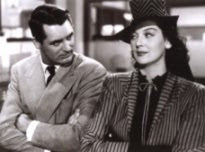The movie quotes Hitchcock (brilliantly incarnated by Toby Jones) telling Hedren (Sienna Miller) that if she insists on breaking her personal contract with him, she will never work in film again. Not entirely true. While Hedren would never enjoy the A-level career she deserved (she’s magnificent in Hitchcock’s “Marnie”), she did land a role in an important – and prestigious – film three years after she and Hitch ditched each other.
Charles Chaplin’s “A Countess from Hong Kong,” released in 1967, had Hedren being handpicked by another legendary filmmaker (shades of her Hitchcock situation here) for a role in a highly anticipated film starring Marlon Brando and Sophia Loren. This was Chaplin’s first film in 10 years, his first (and only) film in color and it would be his final film.
Based on a script that Chaplin wrote in the 1930s as a Paulette Goddard vehicle, it has the contours of a filmed play, with Brando, witty as a 'tic-afflicted American ambassador en route to the States on his boat and Loren as a glamorous Russian countess who stows away on it.

Hedren had the third lead as Brando’s estranged wife who enters the last act. It was originally a small role that Hedren hoped Chaplin would enlarge but, given that the piece is largely a two-hander, its narrative arc made that impossible. It remained a small, but crucial role.
Hedren thought of leaving the production but, according to Wikipedia, “in the end, she remained in the film and later said that it was a pleasure working for (Chaplin).”
The finished film is odd and oddly charming, full of eccentric touches – such as Brando’s character feeling uncomfortable with the close quarters that he’s sharing with Loren and being particularly embarrassed by the idea of using the bathroom (to relieve himself) when she is so nearby. I mean, rude bodily noises. Brando, who has a terrifically guarded chemistry with Loren, plays this moment for all its neurotic idiosyncrasy.
Chaplin cast himself as the ship's steward, a cameo role - once again shades of Hitchcock.
Misunderstood and dismissed, “A Countess from Hong Kong” was not a success, with either critics or its audience. It’s something of a flawed masterwork (Chaplin considered it his best movie) that joins the ranks of such criminally underrated films as Michael Cimino’s “Heaven’s Gate,” Robert Aldrich’s “The Legend of Lylah Clare,” Peter Bogdanovich’s “At Long Last Love” and Hitchcock’s own “Vertigo” and “Marnie.” At least, the latter two have been rediscovered and reevaluated with a new appreciation.
"A Countess from Hong Kong," which has occasionally and uneventfully popped up on home entertainment without much enthusiasm from Universal, is ripe for the same attention and consideration.
Regarding Comments: All comments are enthusiastically appreciated but are moderated before publication. Replies signed "unknown" or "anonymous" are not encouraged. Please sign any response with a name (real or fabricated) or initials. Be advised that a "name" will be assigned to any accepted post signed "unknown" or "anonymous." Thank you.
~images~
(from top)
~Marlon Brando and Sophia Lren in "A Countess from Hong Kong"
~photography: Universal 1967©
~Poster Art for "A Countess from Hong Kong"
~Doris Day and John Raitt in "The Pajama Game"
~photography: Warner Bros. 1957©


























